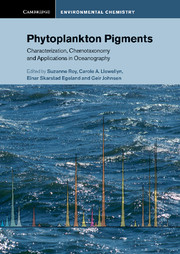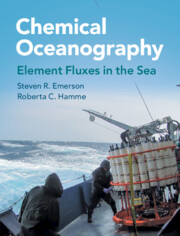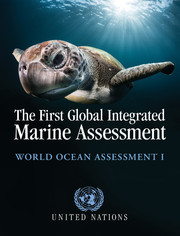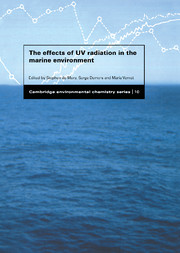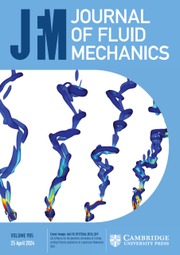Phytoplankton Pigments
Pigments act as tracers to elucidate the fate of phytoplankton in the world's oceans and are often associated with important biogeochemical cycles related to carbon dynamics in the oceans. They are increasingly used in in situ and remote-sensing applications, detecting algal biomass and major taxa through changes in water colour. This book is a follow-up to the 1997 volume Phytoplankton Pigments in Oceanography (UNESCO Press). Since then, there have been many advances concerning phytoplankton pigments. This book includes recent discoveries on several new algal classes particularly for the picoplankton, and on new pigments. It also includes many advances in methodologies, including liquid chromatography-mass spectrometry (LC-MS) and developments and updates on the mathematical methods used to exploit pigment information and extract the composition of phytoplankton communities. The book is invaluable primarily as a reference for students, researchers and professionals in aquatic science, biogeochemistry and remote sensing.
- Includes information on the most recent advances in the biosynthesis of chlorophylls and carotenoids, important for algal physiologists and in the expanding area of algal biotechnology
- Provides examples of the usefulness of pigment-based information in oceanography, notably for bio-optical monitoring of bloom algae, photo-acclimation and determination of growth rates, which are increasingly used for coastal research, impacts of aquaculture, climate change and biodiversity issues
- Provides a series of data sheets giving key information which is vital to help detect and correctly identify algal pigments
Reviews & endorsements
"...an outstanding reference book on marine phytoplankton pigments, their analyses and biogeochemistry. It will become the quality bench mark for marine chlorophyll and carotenoid pigments over the next decade." - R. Fauzi C. Mantoura, Limnology & Oceanography Bulletin November 2012
"Roy et al. have produced an extremely valuable update to an already classic treatise on phytoplankton pigments. Within the more than 800 pages of text, there is something for everyone engaged in modern phytoplankton pigment research and this edition will certainly serve as a trusty bench pal to all those individuals active in the field. However, do not let the book out of your sight, your colleagues will never return it if borrowed." - Nick Welschmeyer, Journal of Phycology
Product details
March 2012Adobe eBook Reader
9781139180856
0 pages
0kg
74 b/w illus. 17 colour illus. 61 tables
This ISBN is for an eBook version which is distributed on our behalf by a third party.
Table of Contents
- List of contributors
- Preface
- Acknowledgements
- List of symbols
- Part I. Chlorophylls and Carotenoids:
- 1. Microalgal classes and their signature pigments S. W. Jeffrey, S. W. Wright and M. Zapata
- 2. Recent advances in chlorophyll and bacteriochlorophyll biosynthesis R. J. Porra, U. Oster and H. Scheer
- 3. Carotenoid metabolism in phytoplankton M. Lohr
- Part II. Methodology Guidance:
- 4. New HPLC separation techniques J. L. Garrido, R. L. Airs, F. Rodríguez, L. Van Heukelem and M. Zapata
- 5. The importance of a quality assurance plan for method validation and minimizing uncertainties in the HPLC analysis of phytoplankton pigments L. Van Heukelem and S. B. Hooker
- Appendix: a symbology and vocabulary for an HPLC lexicon S. B. Hooker and L. Van Heukelem
- 6. Quantitative interpretation of chemotaxonomic pigment data H. W. Higgins, S. W. Wright and L. Schlüter
- 7. Liquid chromatography-mass spectrometry for pigment analysis R. L. Airs and J. L. Garrido
- 8. Multivariate analysis of extracted pigments using spectrophotometric and spectrofluorometric methods J. Neveux, J. Seppälä and Y. Dandonneau
- Appendix: a proven simultaneous equation assay for chlorophylls a and b using aqueous acetone and similar assays for recalcitrant algae R. J. Porra
- Part III. Water-Soluble 'Pigments':
- 9. Phycobiliproteins K.-H. Zhao, R. J. Porra and H. Scheer
- 10. UV-absorbing 'pigments': mycosporine-like amino acids J. I. Carreto, S. Roy, K. Whitehead, C. Llewellyn and M. O. Carignan
- Part IV. Selected Pigment Applications in Oceanography:
- 11. Pigments and photoacclimation processes C. Brunet, G. Johnsen, J. Lavaud and S. Roy
- 12. Pigment-based measurements of phytoplankton rates A. Guttierez-Rodriguez and M. Latasa
- 13. In vivo bio-optical properties of phytoplankton pigments G. Johnsen, A. Bricaud, N. Nelson, B. B. Prézelin and R. R. Bidigare
- 14. Optical monitoring of phytoplankton bloom pigment signatures G. Johnsen, M. A. Moline, L. H. Pettersson, J. L. Pinckney, D. V. Pozdnyakov, E. S. Egeland and O. M. Schofield
- Appendix: harmful algae toxins and pigments E. S. Egeland
- Part V. Future Perspectives:
- 15. Perspectives on future directions C. Llewellyn, S. Roy, G. Johnsen, E. S. Egeland, M. Chauton, G. Hallegraeff, M. Lohr, U. Oster, R. J. Porra, H. Scheer and K.-H. Zhao
- Part VI. Aids for Practical Laboratory Work: Appendix A. Update on filtration, storage and extraction solvents J. L. Pinckney, D. F. Millie and L. Van Heukelem
- Appendix B. The pigment analyst's guide to HPLC hardware A. R. Neeley, C. S. Thomas, S. B. Hooker and L. Van Heukelem
- Appendix C. Minimum identification criteria for identifying phytoplankton pigments E. S. Egeland
- Appendix D. Phytoplankton cultures for standard pigments and their suppliers S. Roy, S. W. Wright and S. W. Jeffrey
- Appendix E. Commercial suppliers of phytoplankton pigments E. S. Egeland and L. Schlüter
- Part VII. Phytoplankton Pigments Data Sheets E. S. Egeland
- Index.

